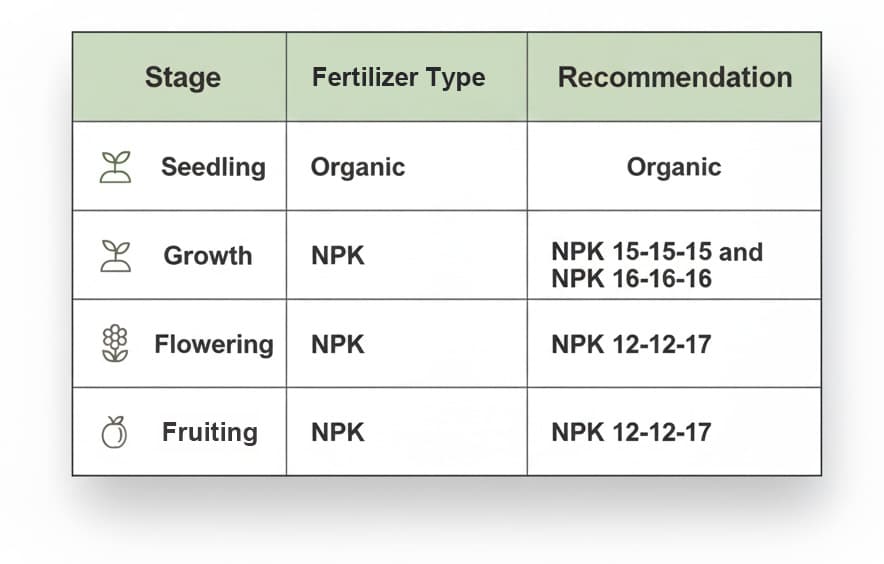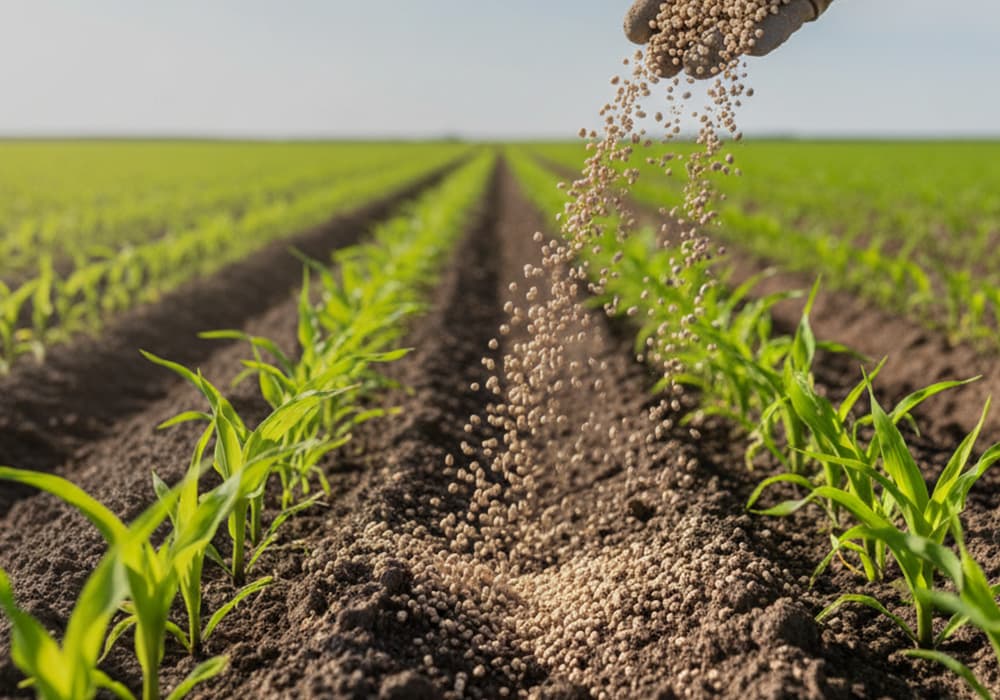Plants don’t need the same nutrients throughout their entire life cycle. As they move from seedling to vegetative growth, then to flowering and fruiting, their nutrient demand shifts. Young plants mainly focus on root development, while mature plants channel energy into building stems, leaves, and eventually producing flowers and fruits.
This is where understanding NPK becomes essential. Nitrogen (N) drives leafy growth, phosphorus (P) supports roots and flowering, and potassium (K) boosts plant strength and fruit quality. Because each nutrient plays a different role at each stage, using the right NPK balance can directly influence plant health and yield.
If you want a deeper explanation of how NPK works, you can read our full article: What You Need to Know About NPK-Based Fertilizers
Avoid Waste and Lower Yield
Using the same fertilizer across the entire growth cycle might seem simpler, but it’s actually one of the most common mistakes. Because plants have changing nutrient needs, applying a “one-size-fits-all” fertilizer often leads to overfeeding some nutrients and underfeeding others.
For example, using a high-nitrogen fertilizer all the way until flowering can result in lush leaves, but very few blooms or fruits. On the flip side, giving too much phosphorus early on is simply wasted, because seedlings can’t use it yet. This mismatch not only affects yield but also increases your fertilizer costs over time.
Switching formulations as the plant grows ensures the nutrients you apply are actually being used, instead of being washed away or building up in the soil.
Best Fertilizer for Seedlings, Growth, Flowering, and Fruiting
Each growth stage has a specific purpose, and the fertilizer should match that purpose. Below is a simple breakdown of what’s happening in each stage and which fertilizer works best.

Seedling Stage
Seedlings are delicate and still developing their root systems. At this point, the priority is gentle, steady growth—not rapid expansion.
Recommended: Organic fertilizers or mild nutrient sources.
Why not NPK yet? Synthetic NPK formulations can be too strong for young roots. High nitrogen can burn seedlings or cause them to stretch too quickly before the roots are ready.
Growth (Vegetative) Stage
This is where the plant builds its “body”—stems, branches, and lots of leaves. A balanced nutrient supply helps support strong structure and healthy foliage.
Recommended: NPK 15-15-15 or NPK 16-16-16
These blends offer balanced amounts of nitrogen, phosphorus, and potassium to support even, healthy growth.
Flowering Stage
When the plant starts forming buds, its energy shifts away from growing leaves. Nitrogen should be reduced, while phosphorus and potassium take the lead to support flower development.
Recommended: NPK 12-12-17
This formulation supports efficient bud formation and helps reduce excessive leafy growth.
Fruiting Stage
At this stage, plants need strong support for fruit set, fruit size, and quality. Like the flowering stage, lower nitrogen prevents unnecessary leaf growth and directs the plant’s energy into producing fruits.
Recommended: NPK 12-12-17
The higher potassium content helps strengthen fruits and improve overall yield.
Borochemie provides fertilizer solutions tailored for every growth stage, ensuring crops get exactly what they need at the right time.
Avoid This Mistake
A few common errors can limit crop performance, even if you’re using good fertilizers:
- Using high nitrogen too late in the cycle, causing excessive leaf growth and poor flowering/fruiting.
- Overapplying phosphorus in soils that already have enough, leading to nutrient imbalance and poor nutrient uptake.
- Using the same NPK formula from start to finish, ignoring the plant’s changing needs.
Avoiding these mistakes can improve efficiency, crop quality, and fertilizer savings.
Conclusion
Crops have different nutrient needs depending on their growth stage. Choosing the right fertilizer at the right time helps plants grow well, produce higher yields, and prevents unnecessary waste. With a clear understanding of each stage, you can make smarter fertilizer decisions that benefit both your crops and your budget.

